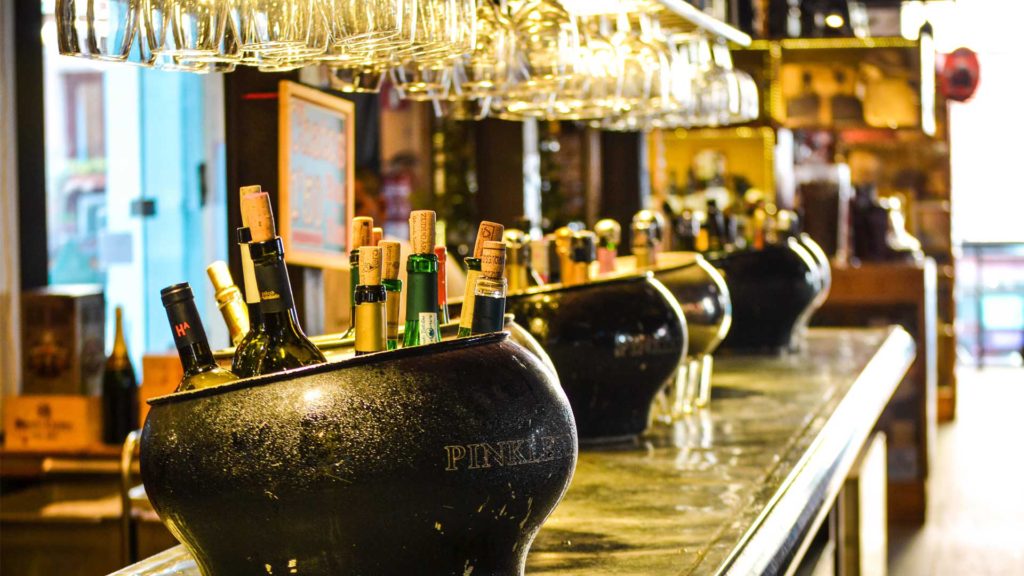EPERNAY – here you learn to love the tiny bubbles that are synonymous with joy and happiness…..
Category: Champagne
Vinexpo Study on Global Wine Consumption, Production and Trends – With Emphasis on China
 Robert Beynat, Chief Executive of Vinexpo delivered results of the study “Current Trends in the International Wine and Spirits Market and Outlook to 2014” a few weeks ago at the Windsor Arms Hotel, Toronto, Canada, in which I was very happy to attend.
Robert Beynat, Chief Executive of Vinexpo delivered results of the study “Current Trends in the International Wine and Spirits Market and Outlook to 2014” a few weeks ago at the Windsor Arms Hotel, Toronto, Canada, in which I was very happy to attend.
For the ninth year, the British firm IWSR (The International Wine and Spirit Research) has produced a detailed report on global consumption, production and international exchanges in the wine and spirits industry. The IWSR study has become a reference for industry professionals.
This year’s study covers 28 producer countries and 114 markets where wine and spirits are consumed and have also included an outlook to 2014. Since 1971, the IWSR database has provided the most detailed and precise information on the global alcoholic beverage market.
The study predicts that world wine consumption will have essentially risen by 8.60% over the 10 year term, 3.18% over the 2009-2014 period.
C H I N A
PRODUCTION
China first entered the top ten producing countries worldwide in 2007 and by 2010 had moved to 7th place with 115 million cases in 2010.
China’s production is expected to increase the most overall with up to 77% (128 million cases) between 2010 and 2014.
CONSUMPTION
Total Chinese wine consumption reached 96.33 million 9-litre cases, equivalent to 1.156 billion bottles, in 2009, an increase of 104% compared to 2005.
Between 2010 and 2014, the VINEXPO study expects Chinese wine consumption to grow by a further 19.6%, reaching 127 million 9-litre cases by the end of the period. At that point, China will be the 6th largest wine consuming country in the world
Legal age per capita wine consumption in China is still only 1 litre per year. “When this level of consumption per inhabitant is compared with the per capita rates of the other top 10 large consumer countries, the extraordinary potential of the Chinese market becomes clear”, Robert Beynat, pointed out.
The study further mentions that the worldwide growth in consumption will be driven by three countries: US, China and Russia.
Wine Tends
The resurgence of Rose’ is forecast to increase 7.8% in the 2009-2014 period.
All price points globally are expected to grow. The largest growth is expected in the more than $10 category with an increase of 15.37% between 2009-2014. While wines between $5-$10 will grow by 9.25%.
Overall World Wine Consumption
Between 2009 and 2014, the VINEXPO /ISWR study forecasts a moderate increase in world wine consumption of 3.18 %, reaching 2.729 billion cases.
Liz Palmer
Wine and Travel Writer
Member of the CWW (UK)
Searcys Rolls Out Champagne Bar: One New Change
Searcys has recently rolled out its latest Champagne Bar One New Change, which is located in the St Paul’s shopping district. Overlooking St Paul’s Cathedral Bar One New Change can accommodate up to 100 guests and will host an extensive Champagne list including over 30 varieties by the flute and over 100 cuvées by the bottle.
The champagne list aims to celebrate the seasons and all styles of Champagne are expected to be represented; features include tasting flights, vintage profiles, rare vintages as well as the theatrical decanting of Champagne.
Champagne will also be matched with fine foods, namely tapas style “plates” such as foie gras and green peppercorn terrine or smoked tuna with almonds.
Michelle Cartwright, the Searcys Champagne Bar concept development manager, said: “To be part of such an exciting launch is a privilege and Searcys is proud to present a bar in such a great retail development.”
Searcys operates at a number of iconic locations, including 40/30, St Pancras Champagne Bar, Westfield Champagne Bar, the Portrait Restaurant at the National Portrait Gallery and the Hurlingham Club.
Searcys plans to launch a further five Champagne Bars in 2011 at various transport hubs and retail outlets.
Moët & Chandon Drops Dosage in Brut Imperial
Moët & Chandon will be lowering the dosage of its market-leading Brut Impérial from 12 grams per litre to 9 g/l according to its chef de cave Benoît Gouez. This follows the decision by Dom Pérignon’s chef de cave Richard Geoffroy, who recently gradually lowered the sugar levels on the prestige cuvée champagnes. Geoffroy said, “There has been a strategy of lowering the dosage in the last 10 years and we are now between 6 and 7 g/l.” This decision by the biggest brand in the region follows a global trend towards adding less sugar to the world-famous fizz. Partly explaining this development is kinder weather in Champagne, giving riper and more complex fruit with less reliance on a conventional dosage of between 10-12 g/l. Michael Edwards from Drinks Business states “Even climate change skeptics cannot deny that, since 1990, harvests have progressively begun two to three weeks earlier than in the ’70s and ’80s – in better-tended, eco-friendly vineyards, under warmer autumnal skies.” As for the right level of sugar, opinions vary, but a balance appears to have been struck between 6-8 g/l, ensuring there is enough sugar to enhance the Champagne’s aromas but also protect the wine from premature oxidation. (this is an important statement as sugar helps the wine from premature oxidation. Philippe Thieffry, senior winemaker at Veuve Clicquot, says “If the Champagne has a moderate dosage – 6-8 g/l – and is well protected by SO2, it will release the same bouquet as one traditionally dosed at 10-12 g/l; it will not suffer oxidation.” Below 6-8 g/l however, and Jean-Baptiste Lécaillon, vice-president at Louis Roederer, says “you reach an oxidative stage that quickly changes the fruit and aromas of the wine.”
THE CHAMPAGNE REGION IS #2 ON THE LIST OF TOP 10 WINE DESTINATIONS FOR MEN
Where does one go for the full oenophile experience? Men’s website AskMen.com offers its top 10 list of wine destinations for those keen to travel for the grape.
No.1 Burgundy
The ancient ocean beds that have receded to give life and fertile soil to the Beaune give Burgundy its depth and complexity. Like an ever-evolving maze, each sip of luscious Pinot Noir or clean, crisp Chardonnay lends itself to a bevy of adjectives and thoughts. The gem among the subclassifications of Burgundy is the Côte d’Or, or the “Golden Slope.” The hillsides in Burgundy gather up the sun’s rays, and paired with the nutrient-rich dried seafloor, give character to famous vineyards like Domaine Romanée-Conti, Vosne-Romanée and Chassagne-Montrachet. Not only do these wines age perfectly if kept in a climate-controlled storage system, but the subtle nuances of the Pinot Noir evolve and mature into silky, smooth perfection.
No.2 Champagne
Champagne is a region known not only for its quality but also its consistency. Big-name producers make both consistent house styles as well as single vintage products, and the quality is unrivaled. With a combination of steady prices and a surge of smaller producers who are meticulous about their quality — like Pierre Gimonnet et Fils — the region offers new products as the big names of Perrier Jouët, Dom Perignon and Moet & Chandon continue to provide classic styles that define elegance, sophistication and celebration. Life would be a little less special without Champagne.
No.3 Tuscany
The home of some of the most recognizable and consistent wines in the world, Tuscany produces such wines as Chianti Classico, Brunello, Carmignano, and the red blends known as Super Tuscans. (Due to the government regulation on the blending of wines, Super Tuscans do not have to adhere to a formula.) Tuscany embodies hard work, dedication and passion. The terroir and texture imbue Tuscan wines with a richness that stands out.
No.4 Bordeaux
No one region has had as much influence over the past century as Bordeaux. Creating everything from a wine culture to mythical vintages that garner more attention than some celebrities, these wines have set standards and tasting profiles worldwide. The two rivers that separate Bordeaux into “left bank” and “right bank” are the Garonne and the Dordogne. Merlot is the granddaddy here and lends its texture to historic wines like Pétrus and Château Ausone. Due to over production, many of the Châteaus are failing to make the same landmark wines they were able to in the early 2000s.
No 5. Mosel
Two rivers, the Saar and Ruwer, cut through the dramatic German landscape and converge into the Mosel River, creating a gorgeous backdrop for some of the most complex wines in the world. The steep south-facing slopes gather as much sun as possible as the delicate Riesling grapes gain a deep minerality from the rich slate soils. Riesling, the soft wine grape, is king here. Before Bordeaux took the world by storm, it was the Rieslings produced here that basked in the world’s attention
No. 6. Napa Valley
The first of the wine regions in the United States to garner international praise and attention, Napa, California, is home to some of the world’s greatest wineries. With a tradition that spans from early settlers to finding a “legal” way around prohibition, the American “cowboy” mentality comes through in the determination to make a world-class wine when they were told they never would. The outstanding Mediterranean microclimate and a mixture of decomposed oceanic fossils and lava ash give the rich grapes of Robert Mondavi, Chateau Montelena and Harlan Estate their bold and elegant flavors.
No. 7. Piedmont
Wine in Piedmont is as much a part of life as breathing. The leading grape here is Nebbiolo, which produces the superb Barolo and Barbaresco wines. To complement the depth of the Nebbiolo wines, sweeter wines Moscato d’Asti and Asti Spumante are made from Moscato Bianco. The mineral-rich wines from Azienda Cerreto feature the citrus and pear flavors of the Arneis grape.
No. 8. Ribera del Duero, Spain
Sitting on the northern plateaux of Spain along the Duero River, the rocky terrain of Ribera del Duero is home to the vines that give birth to the most expensive wine in the world, Vega Sicilia. The Tempranillo grape and the ability to grow world-class Cabernet Sauvignon give this region the leg up on its Rioja brother.
No. 9. Barossa Valley, Australia
Wines from Australia continue to push the envelope in terms of the amount of flavor you can pack into a bottle. An anonymous Australian winemaker once said, “We make wines that punch you in the face and then kick your teeth down the road.” Even though they’re jam-packed with intense fruitiness, the wines are well balanced. For wine drinkers who are looking for a fruit-forward wine that cuts through a meaty steak or a rosemary lamb roast, try a Grenache or a Shiraz.
No. 10. California’s Central Coast and the South of France.
Dubbed by aficionados as “the next frontier,” California’s Central Coast is filled with bar-setting vineyards like Longoria, Foxen and Sanford. Heavy producers of fresh, strawberry-scented Pinot Noirs and clean, woody Chardonnays abound, and producers often experiment with biodynamic farming.
The South of France sets the tone for most of the “green” farming in wine. Coupled with huge flavors and floral bouquets, these wines span palate ranges and have set the groundwork for a new breed of wine making. Regions like Côtes du Rhône and Gigondas produce some of the most complex and dynamic wines in the world. The Châteauneuf-du-Pape style of red-blended wines inspired some of California’s Central Coast’s best Syrah, Grenache and Mourvedre wines.
LA Times

